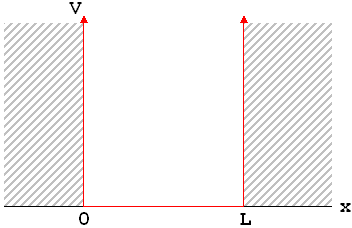omg thankyou jake it just clicked, so basically the levels represent the effect of introduced charge carriers? so for the first one, it's showing that the n-type doped conductor has electrons added that can move more easily into the conduction band - so the donor level just means the extra electrons can move easier into the conduction band.
and the acceptor band means the electrons can move into a hole, they do not require as much energy to move into the conduction band but can instead move to adjacent holes?
is that kinda the jist of it? they have to jump lower energy due to the addition of charge carriers?
You're 100% correct, looks like you have a solid grasp!
also, i was wondering about ur research into quantum tunneling and how that effects processing chips when they start getting super small. we have a research task on transistors and electronics development and effects on society, and one of the parts is about current research and unanswered questions relating to transistors. so i was just wondering if you could give me some insight into the very very basic concepts of your research and some of the issues. i recognise that by making the devices smaller in the integrated circuit, you can fit more making them more powerful processors, and that by making them smaller you reduce energy loss and time between devices, making it faster as well as cheaper to produce as the size decreases. so basically the aim is to make them as small as possible.
You're totally right re making them smaller. However, I think the gist of your question is something along the lines of 'well what does quantum tunnelling have to do with it?'
Since it's way beyond the curriculum, but not too difficult to understand, I'll give you a brief overview. Let's look at an electron, in a classical sense.
We look at an 'infinite square well'.

Why? Well, we imagine that the electrons are 'bound' within a certain location (eg. a part of the transistor), and are allowed to bumble around in that region. A transistor only works if we can control where the electrons are (eg. are they in a p-type semiconductor? An n-type?). Basically, we need to know and be able to affect their movement!
So, in classic physics, we put our electron in an area of the transistor (let's call this our electron well). There are 'walls' stopping the electron from escaping. The 'walls' need to be stronger than the electron, so the electron can't jump over it (I'm talking about energy here, but you can also think of it as physical walls that are taller than an electron can jump). So, we can say if the walls are high enough, our electron stays in the right place, and our transistor works.
However, we make our transistor smaller and smaller. All of a sudden, we need to control EVERY electron, not just 'most' electrons. When we get too small, crazy quantum shit starts to happen.
Our electron is still in this well. However, instead of being 'trapped' by the walls, they have a certain probability of just going straight through! This is insane; it's like me saying that I'll throw a pingpong ball at a wall, and it passes straight through. Or, rather, I try to bounce the ping pong ball OVER the wall, but it's maximum height is half of the height of the wall, and it STILL goes through!!
Now, this messes with our transistor. All of a sudden, we have electrons flowing where we don't want them to flow. This is less of an 'unanswered question' as it is an 'unsolved problem'; we know what's happening, we just don't know the best way to stop it! Dammit, Quantum Physics!

